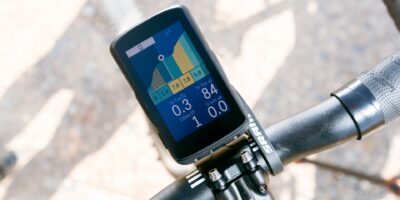Understanding VO2 Max Tables
Understanding VO2 Max Tables
VO2 max is a crucial measure of aerobic fitness. It signifies the maximum amount of oxygen your body can use during intense exercise. A higher VO2 max generally indicates better cardiorespiratory endurance. Athletes and fitness enthusiasts often track this metric to gauge their fitness progress.
To comprehend VO2 max, it’s essential to first know how it’s measured. VO2 max tests typically involve a treadmill or a stationary bike, where the intensity increases incrementally. The person being tested breathes through a mask that measures the volume and gas concentrations of inhaled and exhaled air. This data helps in calculating the maximum oxygen uptake.
Importance of VO2 Max
VO2 max is often considered the gold standard for cardio fitness. It offers an objective way to assess how well the heart, lungs, and muscles work together. This metric is not just useful for athletes; it’s also valuable for individuals looking to improve their overall health. Studies link higher VO2 max values to lower risks of cardiovascular diseases and other health issues.
Factors Affecting VO2 Max
Your age, sex, genetics, and fitness level significantly influence your VO2 max. Generally, VO2 max peaks in your 20s and declines with age. Males usually have higher VO2 max values compared to females. Regular cardiovascular exercise can improve your VO2 max. Elite athletes have VO2 max values that are significantly higher than those of sedentary individuals.
How to Use VO2 Max Tables
VO2 max tables provide benchmarks for different age groups and genders. These tables help in comparing your VO2 max against standardized values. They can serve as a motivational tool and a means to set realistic fitness goals.
Example VO2 Max Table for Men
Here’s an example of a VO2 max table for men, broken down by age groups:
- Age 20-29: Very Poor: < 33, Poor: 33-36, Fair: 37-41, Good: 42-45, Excellent: 46-50, Superior: > 50
- Age 30-39: Very Poor: < 31, Poor: 31-34, Fair: 35-40, Good: 41-44, Excellent: 45-49, Superior: > 49
- Age 40-49: Very Poor: < 30, Poor: 30-33, Fair: 34-37, Good: 38-42, Excellent: 43-46, Superior: > 46
- Age 50-59: Very Poor: < 26, Poor: 26-30, Fair: 31-35, Good: 36-41, Excellent: 42-45, Superior: > 45
- Age 60+: Very Poor: < 20, Poor: 20-26, Fair: 27-31, Good: 32-35, Excellent: 36-40, Superior: > 40
Example VO2 Max Table for Women
Similarly, here’s a VO2 max table for women by age groups:
- Age 20-29: Very Poor: < 28, Poor: 28-31, Fair: 32-36, Good: 37-41, Excellent: 42-46, Superior: > 46
- Age 30-39: Very Poor: < 27, Poor: 27-30, Fair: 31-35, Good: 36-40, Excellent: 41-45, Superior: > 45
- Age 40-49: Very Poor: < 25, Poor: 25-29, Fair: 30-33, Good: 34-37, Excellent: 38-42, Superior: > 42
- Age 50-59: Very Poor: < 22, Poor: 22-27, Fair: 28-32, Good: 33-36, Excellent: 37-41, Superior: > 41
- Age 60+: Very Poor: < 18, Poor: 18-23, Fair: 24-28, Good: 29-32, Excellent: 33-37, Superior: > 37
Improving Your VO2 Max
Regular cardiovascular exercise is the most effective way to improve VO2 max. Activities like running, cycling, and swimming enhance your aerobic capacity. High-intensity interval training (HIIT) is particularly effective. Combining periods of intense activity with short rest intervals pushes your body to utilize oxygen more efficiently.
Strength training also plays a role. Stronger muscles demand more oxygen, pushing your cardiorespiratory system to work harder. A balanced workout routine that includes both cardio and strength training will yield the best results.
Nutrition shouldn’t be overlooked. A healthy diet fuels your body better, enabling it to perform at its best. Staying hydrated and consuming enough carbohydrates will help sustain energy levels during intense workouts. Proteins aid in muscle recovery and growth, further enhancing your fitness level.
VO2 Max in Different Sports
Different sports emphasize VO2 max to varying extents. Endurance sports like long-distance running, cycling, and swimming require a high VO2 max. Athletes in these fields often have VO2 max values much higher than average. Team sports like soccer and basketball also benefit from high VO2 max but incorporate strength, agility, and strategy as well.
Knowing your VO2 max can help tailor your training regimen. If your sport requires high aerobic capacity, focusing more on cardiovascular exercises can be beneficial. Conversely, if your sport is more anaerobic, like weightlifting or sprinting, optimizing but not overemphasizing VO2 max is key.
Tracking Progress and Setting Goals
Regularly measuring VO2 max can offer valuable insights into your fitness progress. It provides tangible data that can inform adjustments in your training program. If your VO2 max isn’t improving as expected, you might need to tweak your workout intensity or duration, or perhaps modify your diet.
Setting achievable goals based on your VO2 max can be highly motivating. Use VO2 max tables as a reference to set benchmarks that are challenging, yet attainable. Celebrate small improvements as they contribute to your overall fitness journey.
Common Misconceptions
There are some misconceptions about VO2 max. One common belief is that a high VO2 max automatically means superior athletic performance. While it’s a significant factor, skills, strategy, and other physical attributes also play crucial roles in overall performance.
Another misconception is that VO2 max is unchangeable. While genetics do play a role, regular and targeted training can significantly improve your VO2 max. It’s a dynamic metric, responsive to the lifestyle and fitness choices you make.
Using Technology to Measure VO2 Max
Various wearable devices now offer estimates of VO2 max. These gadgets use algorithms based on heart rate and exercise data to provide VO2 max estimates. While not as accurate as clinical tests, they offer a convenient way to monitor changes over time. Having instant access to this information can make it easier to track progress and adjust training plans accordingly.
Final Thoughts on VO2 Max Tables
Understanding VO2 max and utilizing VO2 max tables can elevate your fitness regimen. It empowers you to make data-driven decisions that enhance your training efficiency. Whether you’re an athlete or just someone looking to get fitter, keeping an eye on your VO2 max can provide valuable insights and keep you motivated.
Recommended Cycling Gear
Garmin Edge 1040 GPS Bike Computer – $549.00
Premium GPS with advanced navigation.
Park Tool Bicycle Repair Stand – $259.95
Professional-grade home mechanic stand.
As an Amazon Associate, we earn from qualifying purchases.




Subscribe for Updates
Get the latest articles delivered to your inbox.
We respect your privacy. Unsubscribe anytime.